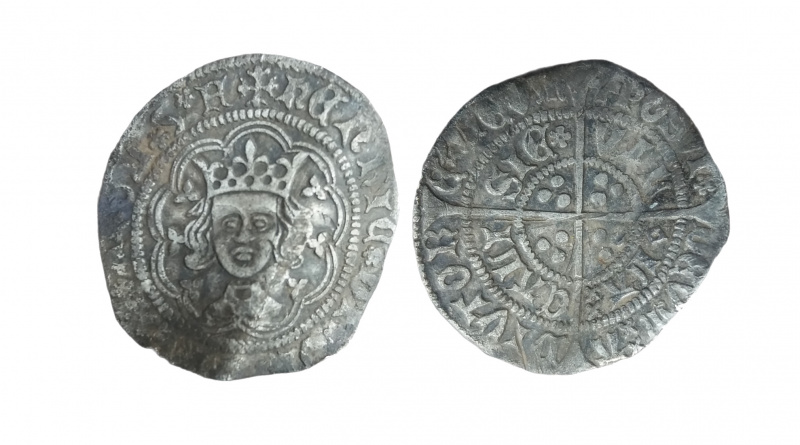Henry VI groat
Stephen Palmer said this coin came off the same field that a few days before had given up a George IV halfcrown. He also located an Elizabeth I sixpence on 4 April. As the field had been searched lots of times and was beginning to be unproductive Stephen is wondering if his latest finds are down to his detecting machine or pure luck.
Detecting can be a funny old game, for there are things about it that I can’t explain. For example, a field can be productive on one visit but very quiet on the next. Then, on a later visit it is productive again. I remember on many occasions searching a relatively small field with a colleague; we found a decent range of coins and artefacts but nothing dating before 1700. It might have been on our tenth search that I found a Henry III cut halfpenny. Thereafter we both unearthed a hammered coin almost every time we searched the field. I’m sure many other detectorists could tell tales about weird find rates in some fields. I was once on a club outing and as I passed another member I asked if he had found anything decent: “No,” he replied, “I’m trying but this damn field seems to be in a bad mood!”
Stephen’s latest find is a groat of Henry VI. The mint signature on the reverse is Calais and the marks in the legend on both sides point towards this coin being struck during the rosette mascle coinage.
Sadly, this groat has some defects. The obverse is partly VF, partly only Fair and there is a bend in the flan starting under the king’s chest. The reverse is good in parts but not in others. On the plus side it’s always nice to find a groat, as this was the largest silver coin in circulation during the later medieval period.
Valuation
Coin Valuation Service
Have your coin or artefact valued using my free online coin valuation service

